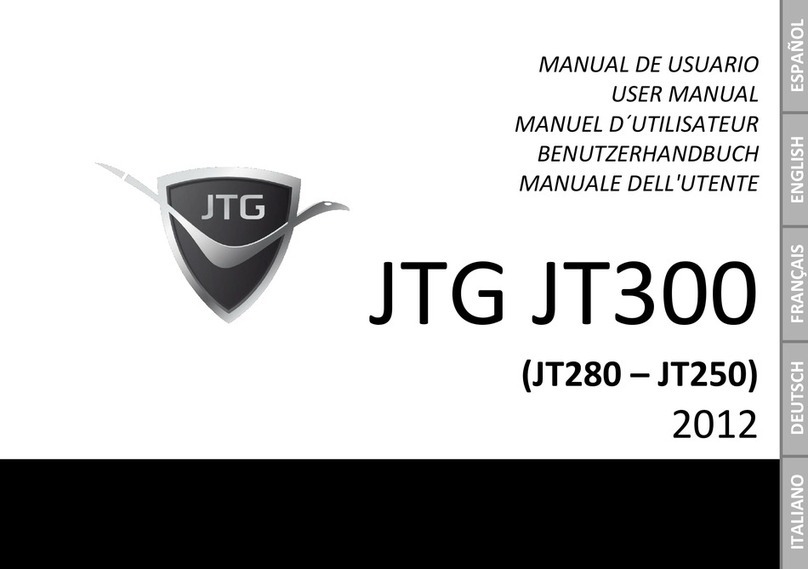JTG RECOMMENDS:
In case of any doubt as to possible adjustments of your motorcycle, please follow the instructions contained
in this manual and/or contact an authorised JTG dealer.
Please read the information contained in this user manual and familiarise yourself with the features of your
vehicle before driving it at maximum power.
It is recommended to establish an initial running-in period of at least 8-10 hours for the engine to bed in,
during this period do not drive at high speed or full throttle. The first hours of use should be at moderate
speed only.
Fuel is highly inflammable. Take care when refuelling and always stop the engine first.
Before running the engine at high speed, it is important to have reached an optimum operating
temperature, especially when starting up the motorcycle or in low temperature conditions.
This motorcycle uses synthetic two-stroke oil mixed with 98-octane fuel in a 1% proportion. Do not use any
other type of lubrication without first consulting with an authorised JTG mechanic.
This motorcycle is designed to carry only one person; it is not permitted to carry a passenger.
For the longest possible service life, keep the motorcycle maintained according to the recommendations in
this manual.
This vehicle has been designed for safe riding, as long as the rider is equipped with the necessary safety gear
(Helmet, body protection, etc.). Take care and ride in a sensible manner.




























